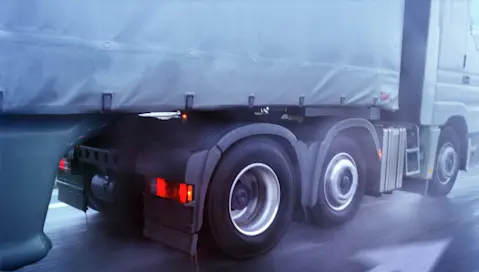Ease the Pain at the Pump with Route Optimisation Software
Ease the Pain at the Pump with Route Optimisation Software
Ease the Pain at the Pump with Route Optimisation Software
26 May 2022
Jim Endres
If you run a private fleet, you are undoubtedly struggling with the nation’s rising gasoline prices. Right now, the national average for a gallon of regular gas is £1.65 per liter. Those prices are even higher for diesel fuel—the national average for diesel is at £1.80 per liter. For drivers of big rigs, that means that filling the tanks would cost between £1,100 and £1,500, triple the cost of what it was last year at the same time. In the last few weeks, diesel fuel rates have hit record highs and analysts predict that prices will probably continue to rise through the summer months. Unfortunately, these prices are hitting the beleaguered transportation industry hard. The industry, already devastated by a global driver shortage, may see even more drivers leave, as fuel expenses are some of the largest expenditures for any fleet. For owner-operators, those costs might be insurmountable.
“In response to the higher costs of fuel and new clean engines, private fleets are exercising greater management scrutiny and cost mitigation,” said NPTC President and CEO Gary Petty. “The key changes are company-mandated practices, driver financial incentives and onboard tracking technology. Examples of how savings are being realised are: directing drivers to take specific routes rather than permitting driver discretion in route selection; paying drivers more money to beat miles per gallon (MPG) targets; monitoring and correcting driver gear-shifting and idling practices which increase fuel consumption; setting maximum miles per hour (MPH) standards for each vehicle, and more aggressive load optimisation programs to enhance productivity out of each run, every day.”
According to NPTC’s website, private fleets account for 82 percent of the medium- and heavy-duty trucks registered in the U.S. So, what can you do to mitigate the impact of these rising costs on the profits and success of your private fleet?
One simple, yet significant strategy is to implement route optimisation software.
How Route Optimisation Software Helps Drive Down Costs
Route planning software, or route optimisation software, helps transportation companies plan and schedule multi-stop delivery routes in the most efficient way possible. Route optimisation refers to the process that software uses to find the most economical route for a vehicle, all while figuring in the number of deliveries you need to make, drivers’ hours of service, customer time windows and other variables. Using advanced algorithms, the software calculates the most efficient means to honour your delivery orders on time, in full and meet customer expectations.
In general, fleets that adopt this type of software can cut about 10–30 percent from operating costs within months. But let’s delve into the specifics of how and why.
Increased Productivity
Routing software will immediately help your fleet become more productive. Let’s say you run a fleet that runs mainly in urban areas. Weight limits or trailer space might reduce the number of deliveries your team can make in a day, so you should look at alternate options. Using the “what if” modeling tools advanced route optimisation software provides, you can experiment with any number of scenarios that will evaluate possible changes to services or fleet makeup. This way, routing software helps your fleet and dispatch managers find the best routes using your current resources.
You can plan route scenarios based on any number of factors, like vehicle capacity, distance between stops, different times of day, driver preferred schedules and even special customer requests. It’s not about the quickest route—it’s about the most efficient route.
You might even find that you can use fewer trucks per day or run your urban routes with smaller vehicles. Think about how much money you could save on diesel right now if you didn’t have to use as many tractor-trailers every day.
By automating your route planning, you fully utilise your vehicles—in both directions. As trucks return, you can schedule backhauls or pickups of empty containers or packaging. This maximises vehicle utilisation and driver productivity and removes the need for additional trips for pickups.
The system minimises the miles your team must travel, and ensures those routes are the most cost-efficient. Not only does that mean that your team spends less time driving, but it also means that they can get to more stops in a day—all on the same tank of gas.
Lower Fuel Costs
Running delivery schedules created by routing optimisation software results in reduced miles leading to less fuel consumption. Your drivers will avoid long stops where they must idle, and careful, optimised route planning avoids the unnecessary mileage. In addition, the system operates on a continuous improvement loop constantly getting updated by information gleaned from your drivers, current road conditions and your dispatch managers which leads to enhanced routing every trip and further opportunities to reduce fuel usage.
Because your vehicles aren’t wasting time traveling unnecessary miles and making redundant stops, you may find you need fewer vehicles in your fleet. Generally, route optimisation software helps reduce maintenance and replacement vehicles in direct correlation with the reduction in mileage.
Route optimisation software works by getting your drivers where they need to be while reducing the number of daily miles doing so. By decreasing the number of miles driven and increasing driver and truck utilisation, you will get more deliveries done, in faster time and with fewer trucks on the road—all with more efficient routing.
As you know, fuel-related expenditures are the biggest expense for any fleet after driver-related costs. The average customer that implements routing and scheduling software can realise a 10% savings in fuel consumption right out of the gate, and the savings keep growing.
Even if you only save 10% on fuel—which is at the conservative end of the scale for cost savings—once you calculate out the total number of fleet miles driven every year, this saving becomes significant. Diesel prices have skyrocketed, but that doesn’t mean your fleet has to stop moving in response. Remember the old saying: “Work smarter, not harder”. Route optimisation software helps you do just that while saving at the pump—and all without changing the makeup of your fleet.
Time to Pivot
We know diesel prices are at historic highs, seemingly here to stay, but you still need to keep your trucks on the road in an efficient manner. Private fleet operators need to act quickly to save money any way they can by pivoting and responding to these challenges by using route optimisation software. Whatever idea you have to help your fleet perform better and use less fuel, Aptean Routing & Scheduling can help you achieve.
The result? Customers get their orders on time, your drivers get home faster and your vehicles need less fuel and require less maintenance. There are myriad ways a route optimisation solution can save your fleet money. If you’d like to examine the impact routing software can have on long-term monetary gains, check out our fleet saving calculator.
Do you want to know more about how routing software can help your fleet save money? Reach out and talk to us or schedule a demo with our team of experts.
20 Ways to Reduce Fleet Operating Costs
Escalating costs within the transport industry are putting many fleet operators and distribution companies under pressure to make savings, whilst seeking ways to optimise operations.



